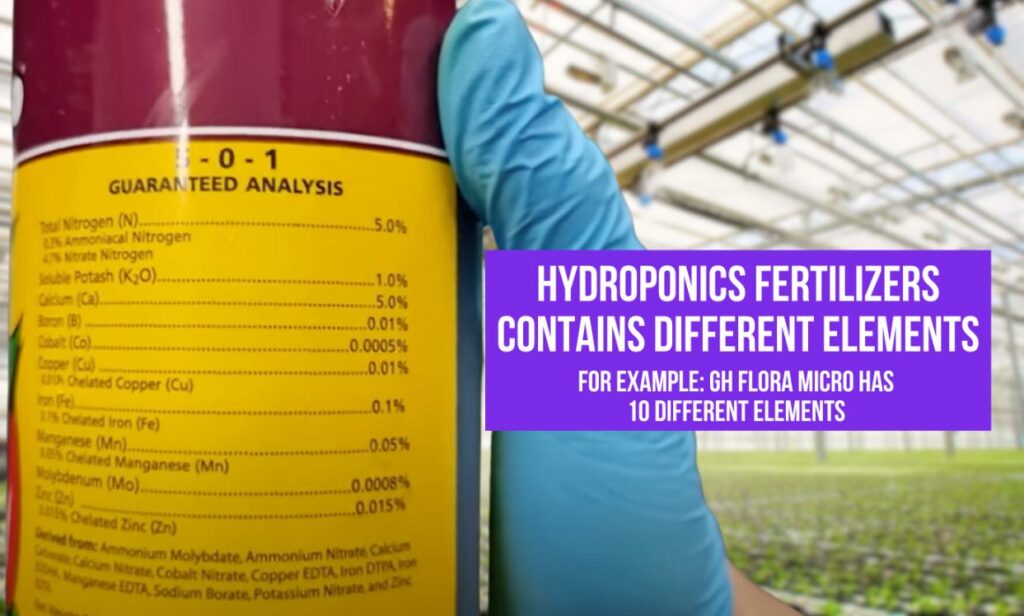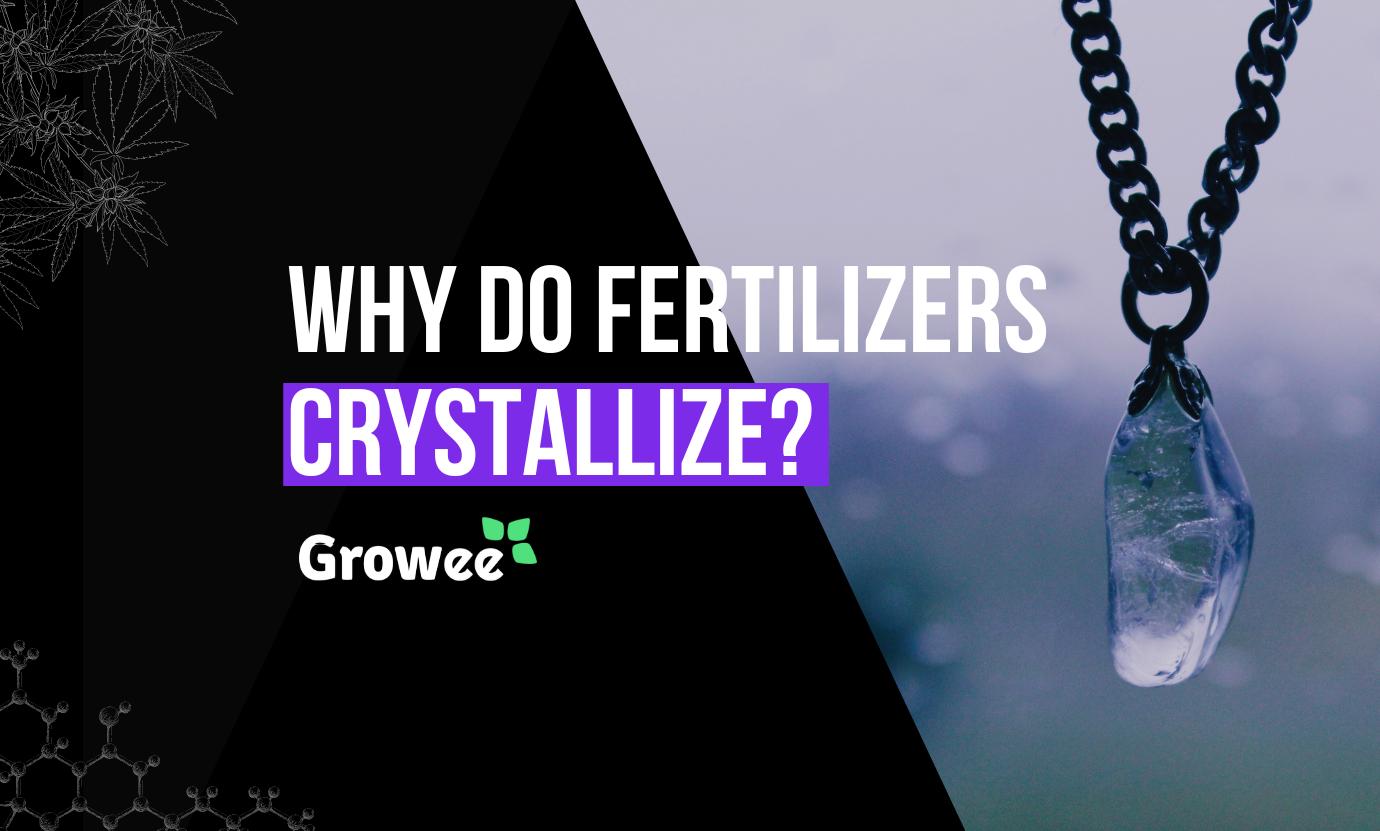If you are growing plants hydroponically, this means that you are growing them without soil and feeding them with a dedicated nutrient solution. There are specific types of nutrients used for hydroponic growing compared to growing plants in soil.
There are many different factors to consider when choosing the right hydroponics nutrients for you, with shelf life being one of them.
Unfortunately, hydroponics nutrients don’t last forever and they do have a limited shelf life. So, how long do hydroponic nutrients last? This and many other related questions will be answered today.
What Are Premixed/Off-The-Shelf Hydroponic Nutrients?
Important to note is that you can buy individual nutrients for hydroponics systems, but there are plenty of premixed or off-the-shelf hydroponics nutrients available for hydroponic systems. You can purchase these at various local gardening stores, specialized hydroponic shops, and online.
To be clear, these are nutrient solutions that are already ready to use. They are pre-formulated and specifically designed for hydroponics systems. They generally contain a balanced mix of both micronutrients and essential macronutrients. This might include nitrogen, potassium, phosphorus, magnesium, calcium, iron, copper, and more.
What you also need to realize is that there are two main types of hydroponics nutrients. There are both powdered hydroponics nutrients and liquid hydroponics nutrients. Liquid hydroponic nutrients are already pre-dissolved, don’t need to be mixed, and are ready to go as is.
Liquid solutions also consist of a homogenous mixture that doesn’t suffer from settling issues. With that being said, liquid nutrient solutions for hydroponics setups tend to be more costly than powder solutions. Important to note is that in spite of powder hydroponic nutrients having a lower cost, they also have a longer shelf life. This makes them ideal for long term storage.
However, the downside with powdered hydroponic nutrients is that you always risk not dissolving them properly in your nutrient solution, and of course, you actually have to prepare the solution yourself. If what you’re looking for is ease of use and overall accuracy, then liquid hydroponics nutrients are considered best.
See How Growee Can Save You Time By Automating Your Plants Feeding
Water pH – Automated pH Up and Down Control
Nutrients Mixing – Automated Nutrient Dosing with Target EC / PPM Control.
Control From Anywhere – WiFi Connection and mobile App
What Nutrients do Hydroponic Plants Need?
Generally speaking, there are 17 essential nutrients that your hydroponic plants need to survive. These are crucial nutrients in terms of plant development and plant growth.
Just as an example, magnesium is an extremely important component of your plants. To be specific, chlorophyll is made-up partially out of magnesium, with chlorophyll being the pigment contained in plants that helps capture light energy, which in turn allows a plant to perform photosynthesis. If a plant doesn’t get enough magnesium, then it can’t efficiently perform photosynthesis.
Broadly speaking, the essential nutrients that your hydroponic plants need can be categorized into two categories, these being macronutrients and micronutrients. Macronutrients include ones such as hydrogen, oxygen, carbon, phosphorus, nitrogen, sulfur, calcium, magnesium, and potassium. We then also have micronutrients, such as manganese, zinc, iron, boron, copper, nickel, chlorine, and molybdenum.
Although we aren’t going to talk about exactly what each of these nutrients does for your hydroponics plants, rest assured that they are all important to have in respectable quantities.
Also keep in mind that while your plants can get oxygen, hydrogen, and carbon from air and water, all of the other nutrients need to come from a nutrient solution. If you are growing in soil, then some of these nutrients will come from the soil, but in a hydroponics system that uses water, all of the nutrients will need to come from a nutrient solution.
Considering pH with Hydroponic Nutrients
Before we move on, something important to consider is the pH level. The pH level has a direct impact on how well your plants can absorb nutrients. For hydroponics systems, the ideal pH level is generally between 5.5 and 6.5, which is very slightly acidic, with seven being considered totally neutral.
The issue with pH is that if it is off too far in either direction, various nutrients will become unavailable to your plants.
Without the right pH level, many of the macronutrients and micronutrients that your plants need will no longer be available, and that can lead to serious nutrient deficiencies. Therefore, make sure that you consistently test your hydroponics system for the pH level, to ensure that your plants can absorb an optimal amount of nutrients.
Where Can I Buy Hydroponic Nutrients for Home Growing?
by which we mean stores dedicated specifically to hydroponic growing. However, you may also be able to find hydroponics equipment in your local garden centers.
If that fails, online retailers such as Amazon and specialized hydroponic sites may be your next best option, followed by the actual manufacturers of the nutrients themselves. If that doesn’t work for you, then you may be able to find hydroponics nutrients at agricultural supply stores or even in community marketplaces.
However, before you make a purchase, make sure that the nutrients you are looking at are 100% compatible with the specific type of hydroponic system you are operating. It might also be a good idea to read some reviews before making a purchase. As a beginner, it might also be valuable for you to go for a full nutrient kit that comes with everything you need to get started.
How to Mix My Feeding Solution According to the Feeding Chart?
One of the best liquid nutrients for hydroponic plants comes from General Hydroponics. This is a three-part nutrient solution including FloraGro, FLoraMicro, and FloraBloom. You’ll want to mix all three together according to the proper ratios.
First, start off with two gallons of clean and clear water. This should be pure water. You should use an electrical conductivity meter, such as those from Growee, to measure the electrical conductivity of the water, which is a measure of how many minerals are in it. If your reading is under 200 parts per million, then you can proceed with mixing your nutrient solution.
Exactly how you mix these three nutrient products together depends on what you are looking to achieve. For instance, for cuttings and seedlings you’ll need a lot less of these nutrients than when the plants are blooming.
For example, if you are making a general purpose nutrient solution for mild vegetative growth, or in other words for plants in their beginning stages just after transitioning from seedling, you’ll want to add one tablespoon per gallon of each of the three products.
Make sure to always use clean measuring utensils and always rinse in between using the three different products, as they should not come in direct contact with each other. The last thing to do is to measure the pH level. As mentioned above, the pH needs to be between 5.5 and 6.5. If the pH falls outside of this range, you’ll need to use either pH up or pH down as required.
How To Use an Automated Doser for Mixing My Nutrients?
To use an automated doser for nutrient mixing, follow the steps as listed below.
- First, make sure that your hydroponics controller is located in an easily accessible area that is dry and secure. Make sure that all of your nutrient containers are placed well below the pumps so that gravity can help transfer the liquids.
- If you haven’t already done so, you’ll need to install both the EC and pH probes in your hydroponic nutrient reservoir. Be sure to follow the directions as provided by the manufacturer.
- Before getting started, you’ll need to use the included standard calibration solutions to calibrate the probes to ensure that you get accurate readings.
- You also need to hook up all of the pumps and tubing that lead from your nutrient containers to the reservoir.
- At this point, you can pour your nutrient solution into the containers as needed.
- With everything set up, you’ll then need to set the desired EC and pH levels on the controller unit. Exactly what your levels are will depend on the plants you are growing.
- You can now manually input the various concentration levels and nutrient ratios that you need.
- For initial calibration, allow the dosing unit to dispense nutrients into a different container, not right into the nutrient reservoir. Once calibration is done, you can then activate the automatic dosing unit using the controller.
- At this point, the unit should automatically monitor EC and pH levels, and then automatically make adjustments by dispensing nutrients, as well as pH up and pH down solutions.
Will the Hydroponic Nutrients Expire?
Yes, hydroponic nutrients do degrade over time. For the record, liquid hydroponic nutrients should last for around two years, with powdered nutrients potentially lasting a little longer.
Now, some people might say that hydroponic nutrients never technically expire, but just start degrading and losing efficiency and efficacy over time. However, as far as we are concerned, if your hydroponic nutrients start losing their nutritional value, then this is the same as being expired.
An important note is that the expiration date labeled on the bottle doesn’t necessarily dictate when the nutrients will expire.
Rather, how long the shelf life of your nutrients is depends on once the nutrients are mixed together. For instance, if you have various bottles of open nutrients that you’ve been storing for months, but haven’t yet mixed together, then the overall shelf life should still be two years.
Signs Your Hydroponic Fertilizers Are Expiring

Crystallization and Sediment: Over time, as nutrients degrade, crystals or sediment can form at the bottom of the nutrient solution container.
Changes in Color: The nutrient solution may change color, indicating chemical changes and the breakdown of nutrients.
Consistency and Smell: The consistency of the solution might become thicker or more viscous, and it may develop an unusual odor, suggesting that the nutrients are no longer effective.
These changes indicate that the nutrients are breaking down and are no longer in their optimal state, which can negatively impact plant growth. Proper storage in a cool, dry place away from direct light can help extend the shelf life of hydroponic nutrients
Why Do Fertilizers Crystallize?

1. Composition of Fertilizers:
Fertilizers, including hydroponic nutrients, are made up of various mineral salts, for example, the general hydroponics Flora Micro, contains 10 different micro elements. these salts are dissolved in water to create a nutrient solution that plants can absorb.
2. Saturation and Solubility:
Every liquid, including your nutrient solution, has a limit to how much of a substance it can dissolve. This limit is called the “solubility” of the substance. When a solution has dissolved as much of a substance as it can, it’s called “saturated.”
3. Changes in Conditions:
Crystallization happens when the conditions change in a way that the solution can no longer hold all the dissolved substances. Here are a few common scenarios:
Evaporation: If water from the nutrient solution evaporates, there’s less liquid to hold the dissolved salts, leading to crystallization.
Temperature Changes: Lower temperatures can reduce the solubility of salts. As the temperature drops, the solution can become saturated and the excess salts start to form crystals.
What is the Shelf Life of Hydroponic Nutrients?

As mentioned above, the average shelf life of hydroponic nutrients, if we are talking about liquid nutrients, is about two years. If we are talking about powdered nutrients, you can likely add a few months or even years to this.
The reason why most hydroponic nutrient solutions last for so long is because of the elements and minerals they are made of. These elements usually don’t break down very quickly. For example, nitrogen is a big component of hydroponic nutrient solutions, and it’s an element that doesn’t break down easily.
What Affects the Shelf Life of Hydroponic Nutrients?
There are three main factors that affect the shelf life of your hydroponic nutrients, including heat, moisture, and air.
Heat
Heat, especially extreme heat, can quickly degrade the overall stability and quality of your hydroponics nutrients. Some of the substances found in hydroponics nutrients solutions start to break down and lose their value with great heat. Furthermore, keep in mind that things like potassium nitrate and ammonium nitrate can even explode if exposed to direct sunlight for prolonged periods.
Moisture
Moisture is not as big a deal for wet or liquid nutrients as it is for dry nutrients, but nonetheless, it still needs to be considered. If you have dry hydroponic nutrients, such as powdered nutrients, if they get exposed to moisture, they can start to clump together. If dry hydroponics nutrients absorb water from the air, they can also start to degrade and lose their overall efficiency.
Air
Dry hydroponic nutrients will also degrade faster if exposed to air, which is because they end up absorbing humidity and moisture. On the other hand, if we are talking about liquid nutrients, they start to evaporate.
If your liquid nutrients start to evaporate, it may result in the actual liquid evaporating while the nutrients themselves stay behind in a more highly concentrated formula. If too much of the liquid evaporates, it may leave you with a nutrient solution that is far too concentrated, which can then lead to problems when feeding your plants.
How to Dispose of Hydroponic Nutrients?
If you have leftover hydroponic nutrients that are well passed to their shelf life, then you need to dispose of them properly. While some growers may flush extra nutrients down the toilet or pour them down the drain, this is not recommended.
This can have a very severe environmental impact on the world around you. Furthermore, although you may be tempted to pour that extra nutrient solution right into your backyard, you’ll end up burning your lawn and other plants.
Therefore, the best way to get rid of your hydroponic nutrients is to filter the minerals out of the water through various purification processes. You can then dispose of that wastewater any way you see fit. If you want to purify the water so you can then dispose of it safely by just pouring it outside or down the drain, you can use either a UV disinfection system or a pasteurization system.
However, one of the most affordable and simplest ways to purify hydroponic water and to remove nutrients from it is by using a reverse osmosis filter. This is a special filtration method where the process of reverse osmosis separates various particles from water molecules. The wastewater travels through a variety of filtration membranes, and once filtration is complete, you can then dispose of it any way you see fit.
Nutrients Considered as Hazardous Waste
All of the hydroponics nutrients out there should come with some kind of storage and disposal statement located on the bottle. If you have a product that is classified as hazardous waste, because for instance it might contain herbicides or pesticides, then you’ll need to follow local regulations in terms of hazardous waste disposal.
How to Properly Store the Nutrients for Longer Shelf Life
Let’s quickly go over some tips so you can get the most shelf life out of your hydroponics nutrients.
- Always store both your liquid and dry nutrients in a cool place. You don’t want extreme heat coming into contact with them as this can cause various substances within the nutrients to degrade.
- Do not expose your nutrient solution to direct sunlight, as both the UV rays and heat from the sunlight can also degrade the nutrients.
- Do not expose the nutrients to air. Both liquid and dry nutrients suffer negative consequences when exposed to air.
- Make sure to keep all nutrients separate until they are ready to be mixed. Also make sure that everything is closed properly after each use.
Conclusion
As you can see, you don’t have to worry too much about your hydroponics nutrients going bad, because they have quite a long shelf life. Furthermore, if you store them properly, you should be able to extend the shelf life just that much more.
FAQ
Is it possible for expired hydroponic fertilizers to harm plants?
Expired hydroponic fertilizers may cause nutrient imbalances or contain harmful microorganisms that can harm your plants.
How can I know if my hydroponic fertilizer solution is bad?
If the smell and color of the hydroponic fertilizer changes, then it’s probably gone bad. Furthermore, if you notice your nutrient solution going cloudy, or if there are unexplained pH changes, it could be due to the nutrient solution going bad.
Can I use additives to increase the shelf life of nutritional solutions?
There are some preservatives and stabilizers that you can use to extend the shelf life of your nutrient solutions, although you have to follow manufacturer’s directions accurately, or else you may end up causing more problems than you solve.
What if I use old nutrients in my hydroponic system?
If you used old nutrients in your hydroponic system, chances are that your plants aren’t getting enough nutrients. Old nutrients may feature reduced effectiveness or even toxicity.
Does the concentration of nutrients affect the shelf life of hydroponic solutions?
Yes, it may be the case that nutrients with higher concentrations may degrade faster than those with lower concentrations.
Can I keep nutritional solutions for a long time?
If stored in a cool and dark place, nutrients should stay good for quite some time.



